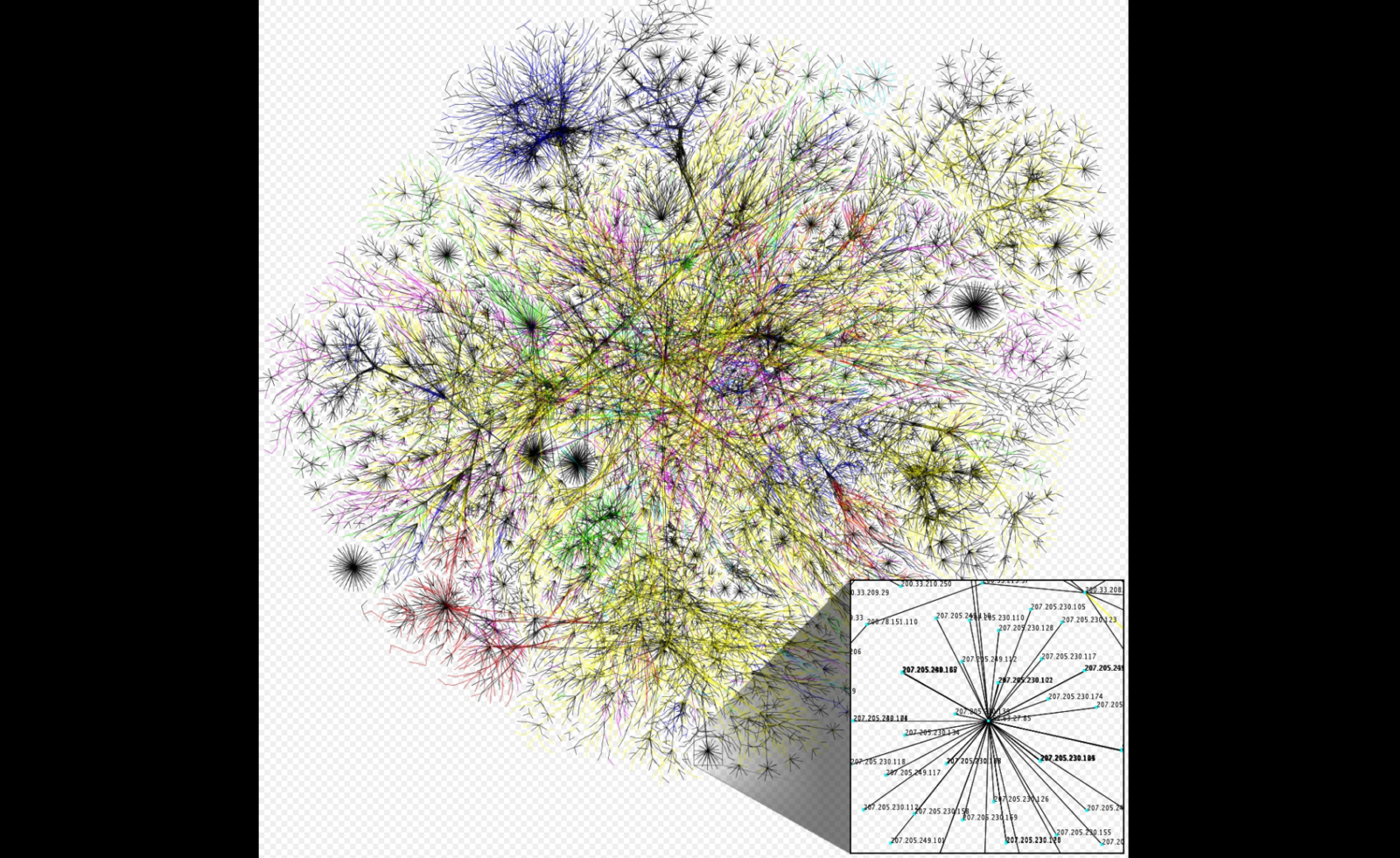Chinese surveillance of the planet by 5G & what is to be done? @BrendanCarrFCC, @GordonGChang

Image: The Opte Project (https://commons.wikimedia.org/w/index.php?title=Barrett_Lyon&action=edit&redlink=1) - Originally from the English Wikipedia (https://en.wikipedia.org/wiki/Main_Page) ; description page is/was here (https://en.wikipedia.org/wiki/en:Image:Internet_map_1024.jpg) . Partial map of the Internet based on the January 15, 2005 data found on opte.org (http://www.opte.org/maps/) . Each line is drawn between two nodes, representing two IP addresses (https://en.wikipedia.org/wiki/IP_address) . The length of the lines are indicative of the delay between those two nodes. This graph represents less than 30% of the Class C (https://en.wikipedia.org/wiki/Classful_network) networks reachable by the data collection program in early 2005. Lines are color-coded according to their corresponding RFC 1918 (https://tools.ietf.org/html/rfc1918) allocation; see: https://en.wikipedia.org/wiki/Intergalactic_Computer_Network#/media/File:Internet_map_1024_-_transparent,_inverted.png / Permissions: see below. Brendan Carr, FCC commissioner, in re: Virtualization of 5G networks. Background: https://www.sdxcentral.com/5g/definitions/5g-virtualization/. Chinese surveillance of the planet. Huawei is trying to wire the world. How can we stop them? Virtualization. China no longer as a rising power; it’s the stumblebum power. 5G will be vastly faster than your current phone, is the economic platform of the future. Huawei, Ericsson, and Nokia are the current 5G providers. None is American. How’d we lose the lead? Huawei is the digital equivalent of the Belt and Road. It’s a threat to our collective security: it’ll collect banking, telehealth and connected-car information, among a thousand other varieties. We propose to forbid Huawei’s entry to the US; to remove it where it is, and _________. If you have an Ericsson box, you can't just transfer smoothly to Nokia; but we’re proposing open-source networks. By this, Americans can win. Huawei is not secure. A virtualized network made by trusted vendors can be secure. Huawei, ZTE. and other firms that are the PLA, will not be part of that. Huawei will send engineers to rural America to wire everything up—and we have no idea what they’ll be doing. It’ll all be connected to your refrigerator and your locked front door, and can drive your car over a cliff. We’ve already seen traffic going from LA to Washington, D.C., and it was re-routed via Guangzhou. .. .. .. .. .. .. .. .. .. .. .. .. "Network virtualization is a method of combining the available resources in a network to consolidate multiple physical networks, divide a network into segments or create software networks between virtual machines (VMs). IT managers who use network virtualization can administer their environment as a single, software-based network. Network virtualization is intended to optimize network speed, reliability, flexibility, scalability and security. It is said to be especially useful in networks that experience sudden, large and unforeseen surges in usage." .. .. .. Permissions: Partial map of the Internet based on the January 15, 2005 data found on opte.org (http://www.opte.org/maps/) . Each line is drawn between two nodes, representing two IP addresses (https://en.wikipedia.org/wiki/IP_address) . The length of the lines are indicative of the delay between those two nodes. This graph represents less than 30% of the Class C (https://en.wikipedia.org/wiki/Classful_network) networks reachable by the data collection program in early 2005. Lines are color-coded according to their corresponding RFC 1918 (https://tools.ietf.org/html/rfc1918) allocation — see: https://commons.wikimedia.org/wiki/File:Internet_map_1024_-_transparent,_inverted.png Date | Original upload: December 1, 2006 / Source | Originally from the English Wikipedia (https://en.wikipedia.org/wiki/Main_Page) ; description page is/was here (https://en.wikipedia.org/wiki/en:Image:Internet_map_1024.jpg) . / Author | The Opte Project (https://commons.wikimedia.org/w/index.php?title=Barrett_Lyon&action=edit&redlink=1) Permission licensed under the Creative Commons (https://en.wikipedia.org/wiki/en:Creative_Commons) Attribution 2.5 Generic (https://creativecommons.org/licenses/by/2.5/deed.en) license. / You are free:to share – to copy, distribute and transmit the workto remix – to adapt the workUnder the following conditions:attribution – You must give appropriate credit, provide a link to the license, and indicate if changes were made. You may do so in any reasonable manner, but not in any way that suggests the licensor endorses you or your use.